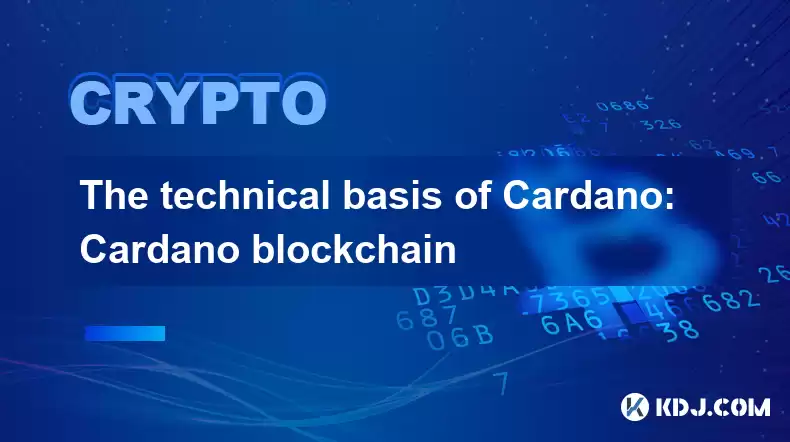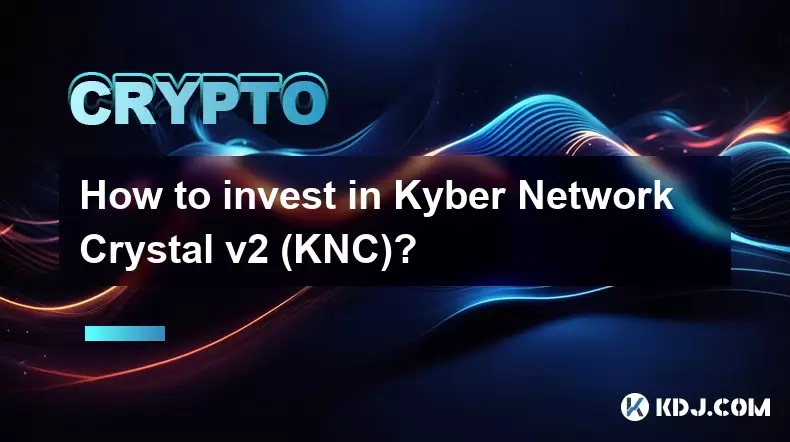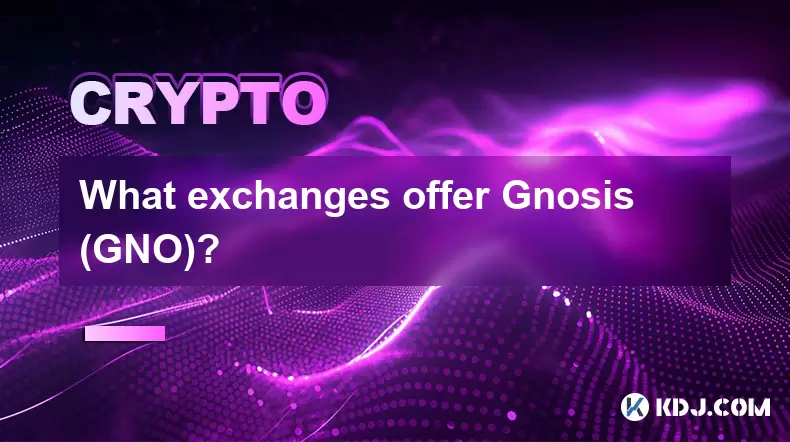-
 Bitcoin
Bitcoin $119900
0.94% -
 Ethereum
Ethereum $4633
9.35% -
 XRP
XRP $3.254
3.60% -
 Tether USDt
Tether USDt $0.9998
-0.04% -
 BNB
BNB $837.0
3.48% -
 Solana
Solana $194.3
10.87% -
 USDC
USDC $0.9998
-0.02% -
 Dogecoin
Dogecoin $0.2370
5.91% -
 TRON
TRON $0.3528
1.79% -
 Cardano
Cardano $0.8460
9.05% -
 Chainlink
Chainlink $23.61
12.06% -
 Hyperliquid
Hyperliquid $44.91
3.99% -
 Stellar
Stellar $0.4475
2.93% -
 Sui
Sui $3.899
5.78% -
 Bitcoin Cash
Bitcoin Cash $620.7
6.74% -
 Hedera
Hedera $0.2602
4.59% -
 Ethena USDe
Ethena USDe $1.000
-0.03% -
 Avalanche
Avalanche $24.84
8.52% -
 Litecoin
Litecoin $131.0
9.17% -
 Toncoin
Toncoin $3.509
3.47% -
 UNUS SED LEO
UNUS SED LEO $9.170
2.15% -
 Shiba Inu
Shiba Inu $0.00001360
4.82% -
 Uniswap
Uniswap $11.66
5.28% -
 Polkadot
Polkadot $4.180
7.93% -
 Ethena
Ethena $0.8242
2.31% -
 Dai
Dai $0.9998
-0.04% -
 Cronos
Cronos $0.1630
-3.04% -
 Pepe
Pepe $0.00001224
9.07% -
 Bitget Token
Bitget Token $4.464
1.16% -
 Aave
Aave $321.9
9.17%
The technical basis of Cardano: Cardano blockchain
Cardano's layered architecture, Ouroboros PoS consensus, Plutus smart contracts, and Haskell programming language combine for enhanced scalability, security, and energy efficiency, enabling diverse decentralized applications.
Mar 09, 2025 at 10:10 am

Key Points:
Cardano's blockchain architecture is based on a layered design, separating concerns for improved scalability and maintainability.
Ouroboros, Cardano's consensus mechanism, is a proof-of-stake (PoS) algorithm designed for security and energy efficiency.
Plutus, Cardano's smart contract platform, allows for the creation of decentralized applications (dApps) and complex financial instruments.
Haskell, a functional programming language, underpins Cardano's development, promoting code correctness and security.
Cardano's roadmap involves ongoing development and upgrades to enhance its capabilities and address scalability challenges.
The Technical Basis of Cardano: Cardano Blockchain
Cardano's blockchain stands apart due to its sophisticated, multi-layered architecture. This design is intentional, aiming for enhanced scalability and maintainability compared to monolithic blockchain structures. Each layer handles specific functionalities, allowing for independent upgrades and improvements without affecting other components. This modularity is a key strength in managing the complexity of a continuously evolving blockchain.
The Cardano blockchain utilizes Ouroboros, a groundbreaking proof-of-stake (PoS) consensus mechanism. Unlike energy-intensive proof-of-work (PoW) systems like Bitcoin's, Ouroboros significantly reduces energy consumption while maintaining a high level of security. It achieves this through a randomized selection process for block creation, rewarding stakeholders proportionally to their ADA holdings. This mechanism ensures the network's decentralization and resilience.
Central to Cardano's functionality is Plutus, its powerful smart contract platform. Plutus allows developers to create and deploy decentralized applications (dApps) and sophisticated financial instruments directly on the Cardano blockchain. This functionality opens the door to a wide range of decentralized finance (DeFi) applications, tokenized assets, and supply chain management solutions. Plutus’s design prioritizes security and formal verification, aiming to minimize vulnerabilities.
The choice of Haskell as the primary programming language for Cardano's development is a significant factor contributing to its robustness. Haskell, a purely functional programming language, is known for its strong emphasis on code correctness and security. Its features minimize the risk of bugs and vulnerabilities, a crucial consideration for a blockchain network handling substantial value. The rigorous nature of Haskell enhances the overall reliability and security of the Cardano ecosystem.
Cardano's development follows a rigorous, phased approach outlined in its roadmap. This roadmap includes ongoing development and upgrades focused on improving scalability, enhancing the functionality of Plutus, and expanding the ecosystem. These planned upgrades are crucial for Cardano to handle increasing transaction volumes and maintain its competitiveness in the ever-evolving cryptocurrency landscape. The roadmap prioritizes community involvement and feedback.
The layered architecture of Cardano allows for independent upgrades of its various components. This modularity simplifies the development process and minimizes disruption to the overall network. The separation of concerns ensures that changes to one layer do not inadvertently affect the functionality of other layers, improving the stability and resilience of the system.
Ouroboros's proof-of-stake mechanism is designed to be significantly more energy-efficient than proof-of-work systems. This contributes to Cardano's sustainability and reduces its environmental impact. The consensus mechanism's security features aim to prevent attacks and maintain the integrity of the blockchain. The rewards system incentivizes network participation and secures the network.
Plutus smart contracts offer a high level of security and flexibility. The ability to create and deploy complex financial instruments and decentralized applications opens up a wide range of possibilities for developers and users alike. This functionality makes Cardano a platform capable of supporting various decentralized applications and financial innovations.
The use of Haskell contributes to the overall security and reliability of the Cardano blockchain. The language's features minimize the risk of common programming errors, reducing vulnerabilities and increasing the system's overall robustness. The rigorous development process ensures high code quality and helps prevent potential security breaches.
The Cardano roadmap outlines the project's future development plans. It details the planned upgrades and improvements, providing transparency and outlining the project's long-term vision. This roadmap is crucial for the continued growth and evolution of the Cardano ecosystem. It emphasizes the community's role in shaping the platform's future.
Frequently Asked Questions:
Q: What is Cardano's consensus mechanism, and how does it work?
A: Cardano uses Ouroboros, a proof-of-stake (PoS) algorithm. Instead of energy-intensive mining, validators are chosen proportionally to their ADA stake to create blocks, securing the network efficiently.
Q: What is Plutus, and what is its role in Cardano?
A: Plutus is Cardano's smart contract platform. It enables developers to build decentralized applications (dApps) and complex financial instruments on the Cardano blockchain, expanding its functionality.
Q: Why is Haskell used in Cardano's development?
A: Haskell's functional programming paradigm enhances code correctness and security, minimizing bugs and vulnerabilities crucial for a robust blockchain system.
Q: How scalable is the Cardano blockchain?
A: Cardano's layered architecture is designed for scalability. Ongoing development focuses on improving transaction throughput and handling increased network load through various upgrades and enhancements.
Q: What are the key advantages of Cardano's layered architecture?
A: The layered architecture allows for independent upgrades and improvements to different parts of the system, increasing maintainability and reducing the risk of widespread disruptions. It enhances scalability and modularity.
Disclaimer:info@kdj.com
The information provided is not trading advice. kdj.com does not assume any responsibility for any investments made based on the information provided in this article. Cryptocurrencies are highly volatile and it is highly recommended that you invest with caution after thorough research!
If you believe that the content used on this website infringes your copyright, please contact us immediately (info@kdj.com) and we will delete it promptly.
- Unich's OTC Exchange: Surging with $1.2B Volume – What's the Hype?
- 2025-08-13 02:50:11
- MoonBull's Explosive Moves: Your Crypto Whitelist Ticket to Ride!
- 2025-08-13 02:30:11
- MAGACOIN Finance: Don't Miss the Presale Bonus!
- 2025-08-13 02:30:11
- Trump's Crypto Kingdom: $2.4 Billion and Counting
- 2025-08-13 02:50:11
- Solana, LSTs, and SEC Approval: A New Dawn for Crypto?
- 2025-08-13 02:55:12
- Bitcoin's Profit Surge: Unpacking the BTC Value Boom
- 2025-08-13 02:55:12
Related knowledge

How to purchase Aragon (ANT)?
Aug 09,2025 at 11:56pm
Understanding Aragon (ANT) and Its PurposeAragon (ANT) is a decentralized governance token that powers the Aragon Network, a platform built on the Eth...

Where to trade Band Protocol (BAND)?
Aug 10,2025 at 11:36pm
Understanding the Role of Private Keys in Cryptocurrency WalletsIn the world of cryptocurrency, a private key is one of the most critical components o...

What is the most secure way to buy Ocean Protocol (OCEAN)?
Aug 10,2025 at 01:01pm
Understanding Ocean Protocol (OCEAN) and Its EcosystemOcean Protocol (OCEAN) is a decentralized data exchange platform built on blockchain technology,...

How to invest in Kyber Network Crystal v2 (KNC)?
Aug 12,2025 at 05:21pm
Understanding Kyber Network Crystal v2 (KNC)Kyber Network is a decentralized liquidity hub built on the Ethereum blockchain that enables instant token...

Where can I buy UMA (UMA)?
Aug 07,2025 at 06:42pm
Understanding UMA and Its Role in Decentralized FinanceUMA (Universal Market Access) is an Ethereum-based decentralized finance (DeFi) protocol design...

What exchanges offer Gnosis (GNO)?
Aug 12,2025 at 12:42pm
Overview of Gnosis (GNO) and Its Role in the Crypto EcosystemGnosis (GNO) is a decentralized prediction market platform built on the Ethereum blockcha...

How to purchase Aragon (ANT)?
Aug 09,2025 at 11:56pm
Understanding Aragon (ANT) and Its PurposeAragon (ANT) is a decentralized governance token that powers the Aragon Network, a platform built on the Eth...

Where to trade Band Protocol (BAND)?
Aug 10,2025 at 11:36pm
Understanding the Role of Private Keys in Cryptocurrency WalletsIn the world of cryptocurrency, a private key is one of the most critical components o...

What is the most secure way to buy Ocean Protocol (OCEAN)?
Aug 10,2025 at 01:01pm
Understanding Ocean Protocol (OCEAN) and Its EcosystemOcean Protocol (OCEAN) is a decentralized data exchange platform built on blockchain technology,...

How to invest in Kyber Network Crystal v2 (KNC)?
Aug 12,2025 at 05:21pm
Understanding Kyber Network Crystal v2 (KNC)Kyber Network is a decentralized liquidity hub built on the Ethereum blockchain that enables instant token...

Where can I buy UMA (UMA)?
Aug 07,2025 at 06:42pm
Understanding UMA and Its Role in Decentralized FinanceUMA (Universal Market Access) is an Ethereum-based decentralized finance (DeFi) protocol design...

What exchanges offer Gnosis (GNO)?
Aug 12,2025 at 12:42pm
Overview of Gnosis (GNO) and Its Role in the Crypto EcosystemGnosis (GNO) is a decentralized prediction market platform built on the Ethereum blockcha...
See all articles

























































































